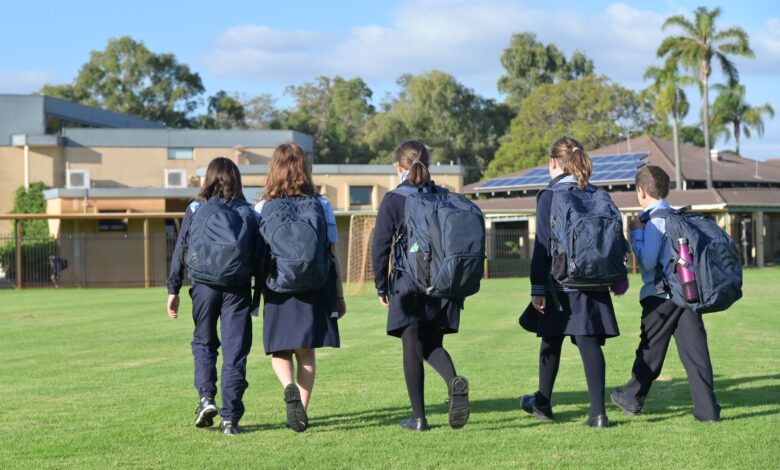How Australian Schools Responded to the King’s Death in 1952
This week saw an outpouring of grief with the news of Queen Elizabeth II’s passing at the age of 96. Here in the colonies, we heard the news within minutes. It’s a very different world from that of seventy years ago with the passing of Elizabeth’s father, King George VI.

When it was discovered by a valet that King George VI had passed away in his sleep on the morning of Wednesday February 6th, 1952 it was another four hours before the news was officially conveyed to the world. When the BBC started its radio broadcast, it was already late evening on the east coast of Australia.
The BBC repeated the announcement every quarter hour for two hours before falling silent for five hours.
In Australia, news of the King’s death stunned and shocked the population. He was only 56 years old, and his death was considered unexpected although he had never quite recovered from a lung operation five months prior.
Some schools closed on Thursday1, while others held short ceremonies announcing the news to the assembled students. All schools and government buildings lowered their flags.
In New England, the headmaster of The Armidale School, Mr G Fisher held a service for the 530 assembled students during which he “spoke of the uncertainties of human existence and the fine record of the late King,” while the deputy Headmaster, Mr J Williams admitted that like all public schools, they were awaiting instructions from the Department of Education as to the procedure to be taken2.
The King’s School in western Sydney had been due to celebrate its 120th anniversary on the Saturday, having been bestowed with Royal sanction and patronage since the reign of King William IV. However, with the news of the King’s passing, the commemoration was abandoned3.
In the north of Queensland, district schools flew flags at half-mast for two weeks, while “Head teachers gave the children addresses and explained the deep significance of the British Throne4.”
The headmaster at Ballina High School, Mr A. T. Williams considered the loss a personal one when he addressed the northern NSW school. “It may help you to appreciate the solemnity of the occasion if you know that millions of people of every race and colour throughout the world are doing now just what you are doing,” he said to his students5.
In 1952, the British Commonwealth was newly minted, having been founded in 1949 after the disbanding of the British Empire. At the time there were eight member nations: Australia, Canada, India, New Zealand, Pakistan, South Africa, Sri Lanka and the United Kingdom.
Today the Commonwealth consists of 15 member states, 36 republic members and 5 nations with their own monarchs. It is a symbolic and voluntary membership, home to more than 2.5 billion people6.
Not all schools closed or changed their curriculum following news of the King’s death. After the brief service at The Armidale School, lessons returned to normal, while at the New England Girls’ School the headmistress announced “the school would continue as usual and there would be no departure from normal curriculum2.”
On the day of King George’s funeral, February 15th, many churches across Australia, of all denominations held masses, including services that school children were expected to attend. There was no national day of mourning or public holiday granted, and the state Cabinets each made their own decision as to whether schools would close.
The State Cabinet of Queensland decided against a school holiday, saying no such day had been granted following the death of King George V in 1936. Instead, two minutes’ silence would be observed at noon in line with the other states and Commonwealth7.
But individual schools, under the guidance of individual headmasters and headmistresses, made independent decisions regarding how elaborate their demonstrations would be. One particularly loyal school, Reefton Public School in southern New South Wales “observed a day of mourning… the teacher being dressed in full mourning and everyone [sic] of the children in half-mourning, the boys wearing black crepe armbands and the girls black bows for the solemn occasion… from 11 a.m. to noon relays of senior pupils tolled a bell at half minute intervals, and at noon two minutes silence was observed8.”
One thing school children in 1952 had in common with today’s students was that the reigning sovereign was the only one they had ever known.
While their parents and teachers would have experienced two accessions to the throne, in January 1936 when King Edward VIII became monarch upon the death of his father, and then again in December when he abdicated in favour of his younger brother, in 1952 Australian children would only have been familiar with King George.
After seventy years on the throne, Queen Elizabeth II was the only regent most Australians of any age have known, and her reign covered almost a third of Australia’s colonial history. Her death – and life – has left a complicated legacy for Aboriginal and Islander Strait people and sparked discussions about the ongoing challenges faced by Indigenous people9.
As a sign of respect, schools are reminded they should consult local Elders and seek permission before lowing the Aboriginal and Torres Strait Islander flags10.
The Australian Federal Government has granted a public holiday and national day of mourning for Thursday September 22nd.
References:
- http://nla.gov.au/nla.news-article258779374
- http://nla.gov.au/nla.news-page22241092
- http://nla.gov.au/nla.news-article231021114
- http://nla.gov.au/nla.news-article78739148
- http://nla.gov.au/nla.news-article96546175
- About us | Commonwealth (thecommonwealth.org)
- http://nla.gov.au/nla.news-article42736398
- http://nla.gov.au/nla.news-page21279784
- Queen Elizabeth II dies: Indigenous Australians debate a complex legacy (smh.com.au)
- What flags fly at half-mast after Queen Elizabeth II’s death and for how long? – ABC News







